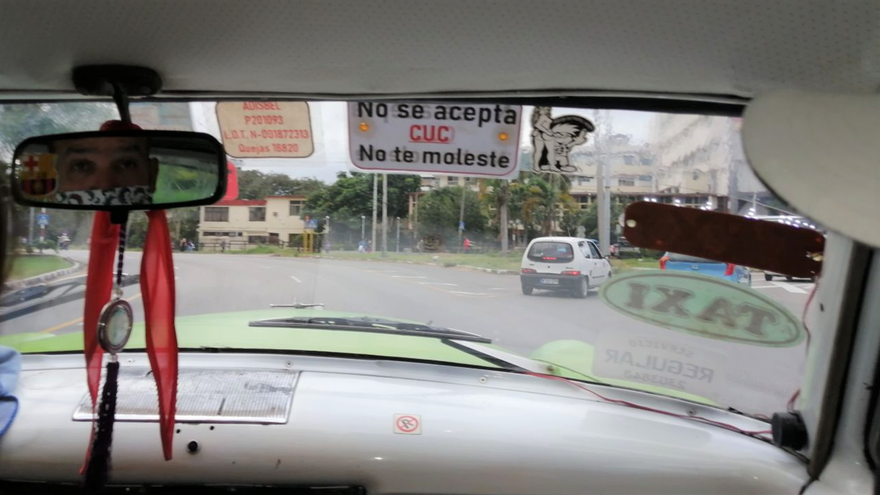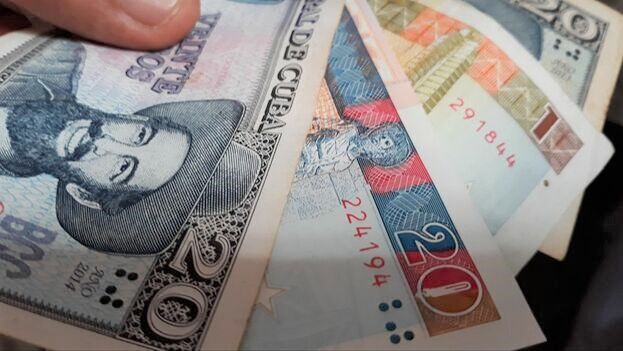
![]() 14ymedio, Havana, December 10, 2020 — One of the most frequently asked questions in Cuba in recent years has finally been answered: currency unification will begin January 1, 2021, putting an end to the Cuban convertible peso* (CUC). The date was announced by President Miguel Díaz-Canel during a special broadcast on national television.
14ymedio, Havana, December 10, 2020 — One of the most frequently asked questions in Cuba in recent years has finally been answered: currency unification will begin January 1, 2021, putting an end to the Cuban convertible peso* (CUC). The date was announced by President Miguel Díaz-Canel during a special broadcast on national television.
It will be done “at an exchange rate of twenty-four Cuban pesos* to the the dollar,” said the president, who was seated next to the leader of the Communist Party, Raul Castro, who did not utter a word. The transition “is not by itself a magic bullet,” warned Díaz-Canel, who described it as one of the most complex reforms “the country has implemented.”
Speculation about when “Day Zero” will take place had been growing in recent weeks. Knowing the exact date had become important in determining the costs of many things, from the price of goods in the informal market to the price of real estate. As a result, many people have tried to pierce through the veil of official secrecy to figure out the exact timing of the Cuban convertible peso’s demise.

For months private businesses and independent taxi drivers have displayed signs informing customers they do not accept CUCs. Increasingly, black market transactions are done in Cuban pesos (CUP) or dollars, whose growing presence on the island is a response to anxiety over impending currency unification.
Last October, Marino Murillo Jorge, head of the Commission for the Implementation of Legal Statutes and known as the island’s “reform czar,” indicated that the government would provide temporary subsidies to some state enterprises that undergo financial losses. The move is an effort to stave off unemployment and guarantee production of basic goods.
Until now, the varying exchange rates* between the two currencies have made it difficult to determine the actual value of state-owned companies. Experts believe that the reform will show that a large number of businesses that now appear to be solvent are actually in the red.
Widespread circulation of convertible peso bills, popularly known as chavitos, began in Cuba in 2004. The currency was intended to be a substitute for the dollar, which had burst upon in the island’s economic scene after its possession was decriminalized in 1993.
In those years the government set the value of the CUC to the CUP at one to one for state owned enterprises while the rate for individuals was one to twenty-five, which distorted the national economy.
The existence of two currencies created a marked disparity between those who had access to hard currency in the form of CUCs and those who had to rely on the less valuable CUP. This was especially notable since state workers were paid in CUPs, which could not be used in hard currency stores, known as shoppings, which only accepted CUCs.
In an attempt to advance the unification process, in 2014 stores were authorized to accept both currencies. But the chasm between those who relied on a salary and those who were receiving remittances from overseas, or who had some other form of acquiring hard currency, remained.
*Translator’s note: The relationship between Cuba’s two currencies, and the related exchange rate relative to the dollar and other foreign currencies, has long been a ’slippery’ concept. The Cuban convertible peso (CUC) has been nominally equal to one US dollar, although CUCs are not actually convertible to any world currency and it is illegal to take them out of the country. Meanwhile, 24 or 25 Cuban pesos (CUP) are the equivalent of one CUC. The recent introduction of State stores that only accept foreign currencies (abbreviated MLC), which must first be loaded onto a magnetic card at State banks, has complicated the picture still further, and recently all the exchange rates have fluctuated.
____________
COLLABORATE WITH OUR WORK: The 14ymedio team is committed to practicing serious journalism that reflects Cuba’s reality in all its depth. Thank you for joining us on this long journey. We invite you to continue supporting us by becoming a member of 14ymedio now. Together we can continue transforming journalism in Cuba.
